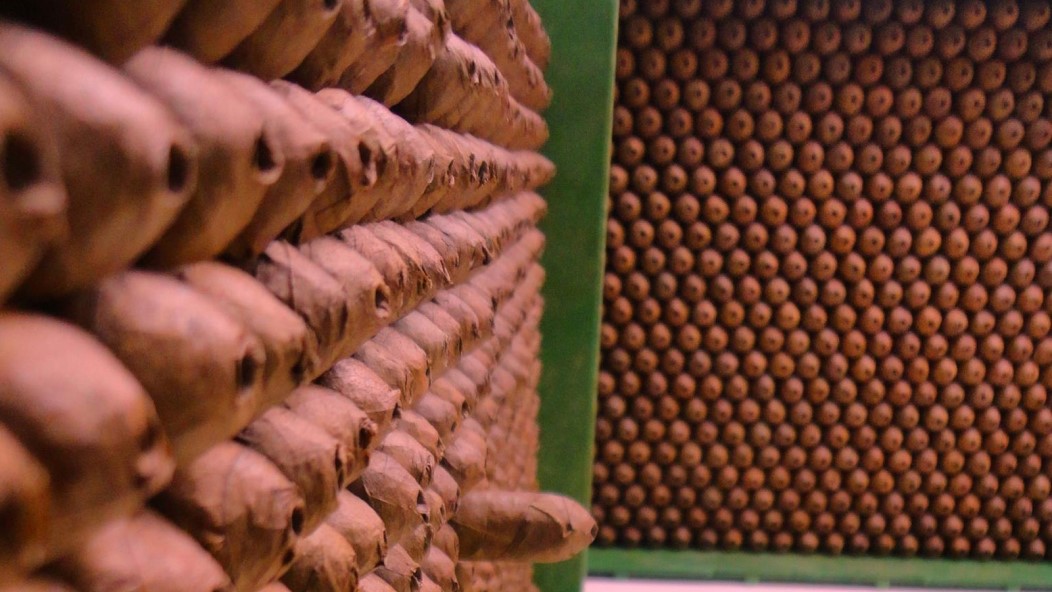
The Sri Lankan tobacco industry is applauded worldwide for producing premium quality tobacco. As an exporter of processed and unprocessed products, Sri Lanka takes it upon herself to cultivate almost 100% of the tobacco used in cigarettes manufactured in the country.
Grown and nurtured on the fertile soil of the tropical island blessed with golden sunlight all year long, Sri Lankan tobacco depicts an authentic flavour that promises to leave consumers bewitched. Mixed with the distinct and tangy aroma that swirls around in all its glory, Sri Lankan tobacco certainly is worthy of royalty. Anyone who has ever taken a drag will vouch for the fact that there is nothing quite like it!
Sri Lanka is no toddler when it comes to the tobacco industry. In fact, tobacco cultivation in Sri Lanka has its roots in the era of colonization itself; it was the Portuguese, the first to invade Sri Lanka, who introduced the leafy plant to this exotic land. Later, the tobacco industry thrived under the British American Tobacco company, coming a long way to where it is today.
The British American Tobacco Company (BAT) was established in 1906 in the crown colony of Ceylon, as Sri Lanka was known back in the day. The first office of BAT was opened in Prince Street in Pettah, the nexus of Ceylon’s busy commercial capital, rapidly growing at the time. By 1927, BAT manufactured the first cigarettes of Ceylon, taking charge in creating what would eventually come to occupy a prominent position in Sri Lanka’s export industry.
BAT rapidly and successfully adapted to the local atmosphere, linking itself intrinsically to the socio-cultural and economic tapestry of Sri Lanka. As a result, by 1932, the company emerged as the Ceylon Tobacco Company (CTC). From there on, the tobacco industry in Sri Lanka bloomed, growing at a brisk pace.
Owing to the escalating demand, CTC decided that the existing facilities needed expansion and modification. So, in 1940, the Ceylon Tobacco Company shifted to Kotahena, a relatively suburban area away from the hustle and bustle of Pettah’s jam-packed cityscape. Still located there, the company continues to be the major stakeholder in the Sri Lankan tobacco industry, serving a vast client base scattered across the world map.
At present, the island’s key tobacco-growing regions are Galewela, Polonnaruwa, Mahiyangana, Ududumbara, Haliela and Buttala. Spanned over the dry regions and the wet regions of the country, tobacco fields in these areas produce high-end tobacco of supreme quality.
From young sprouts to matured bales, these tobacco fields are attended by farmers with proven expertise and dedication. Upon harvesting, tobacco leaves are processed and manufactured using both traditional knowledge and modern technology. And that is the secret behind Sri Lankan tobacco reaching international markets in pristine quality.
According to 2010 data and statistics, Sri Lanka exports tobacco-related products such as tobacco leaf and cigarettes to a multitude of countries including the Netherlands, Ireland, Spain, China and Maldives.
The Sri Lankan tobacco industry functions under several taxes and regulations imposed by the government. As CTC states, “The tobacco industry in Sri Lanka is one of the most heavily regulated in the world.” The CTC, as the main corporate body in the industry owning 99% of the market, constantly interacts with relevant authorities to ensure that tobacco-related subjects are regulated sensibly.
The British American Tobacco company
Dominates the Sri Lankan tobacco industry as the owner of 84.13% of the shares of Ceylon Tobacco Company PLC Ltd. Currently, CTC produces tobacco under a variety of labels
Apart from the CTC, the following companies are also involved in the tobacco industry.
United Tobacco Processing Pvt. Ltd
A company dedicated to environmental preservation, the UTP produces cigars and bobbins out of premium quality tobacco, exporting to mainly the EU and Asian countries.
Aigo Tobacco Processing Co Pvt. Ltd
Established in 1985, ATP is an exception among the rest. It imports bales of raw tobacco from countries like Indonesia, Brazil and Ecuador and processes and manufactures them in Sri Lanka.
Almost 100% of the tobacco used for manufacturing is cultivated in the country which ensures the highest quality of products that are up to par with the highest global standards. Ceylon Tobacco Corporation controls the tobacco market and its exports.